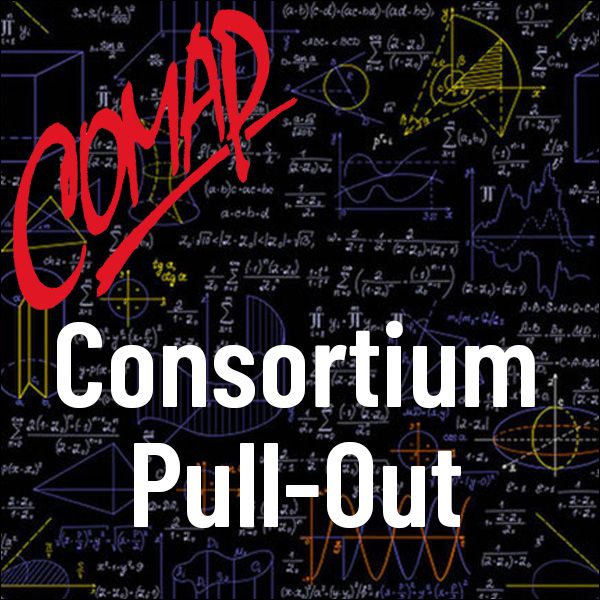Modeling with Matrices
Author: Marsha Davis
This Pull-Out provides real-world settings that guide students through matrix addition and subtraction, and scalar and matrix multiplication. In Activity 1, students store prices of pizzas, salads, and soft drinks from three pizza houses into a matrix. Matrix addition is used to revise the prices to reflect the cost of additional toppings and choices of salad dressings. After organizing information on coupons into a matrix, matrix subtraction is used to apply the coupons and reduce the costs. At the end of Activity 1, students learn how to store matrices in TI-84 graphing calculators. Then they use their calculators to determine sums and differences of two matrices. (Instructions on using Excel are included in the Lesson Notes.) In Activity 2, students use scalar multiplication to compare the prices of ordering k pizzas and k salads from each of the pizza houses. Matrix multiplication is introduced in three steps: (1) multiplying a row matrix and a column matrix, (2) multiplying a row matrix and a multicolumn matrix, and finally, (3) multiplying a multi-row matrix and a multi-column matrix. Then matrix multiplication is used to compare three possible options for the purchases of pizzas and salads at the three pizza houses. At the end of Activity 2, students use their calculators to investigate whether the Associative and Commutative Laws for Addition and Multiplication, which students have learned in their algebra classes, also hold for matrices. Activity 3 focuses on use of matrices to investigate a population growth model called the Leslie model. Students use their calculators (or Excel) to approximate the age distribution of a population and the size of the total population into the future.
The activities in this Pull-Out address standard N-VM-(6-9) from the Common Core State Standards for High School Mathematics -Perform operations on matrices and use matrices in applications. Here are the details of Items 6 - 9:
6. Use matrices to represent and manipulate data.
7. Multiply matrices by scalars to produce new matrices.
8. Add, subtract, and multiply matrices of appropriate dimensions.
9. Understand that, unlike multiplication of numbers, matrix multiplication for square matrices in not a commutative operation but still satisfies the associative and distributive properties.
Mathematics prerequisites and discussion:
Students need to be able to add, subtract, and multiply numbers. They should be familiar with the Associative and Commutative Laws of Addition and Multiplication. The mathematics in this Pull-Out focuses on matrices but students do not need to have any prior experience with matrices. After completing this unit, students should be able to add and subtract matrices, perform scalar multiplication, multiply two matrices, and raise a square matrix to a power. Along the way, students will discover that the Associative Laws of Addition and Multiplication and the Commutative Law of Addition hold for matrices. However, the Commutative Law of Multiplication does not hold for matrices.

Mathematics Topics:
Application Areas:
Prerequisites:
• Graphing calculator or other calculatorwith matrix capabilities
• Access to Excel (optional)
You must have a Full Membership to download this resource.
If you're already a member, login here.